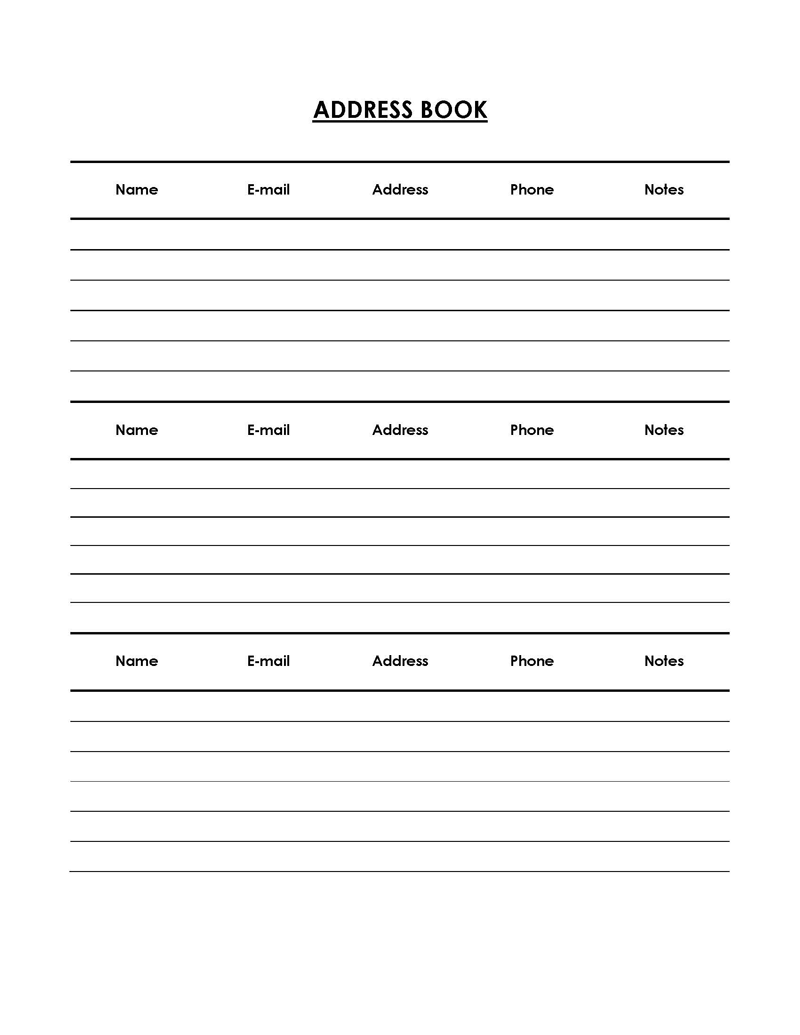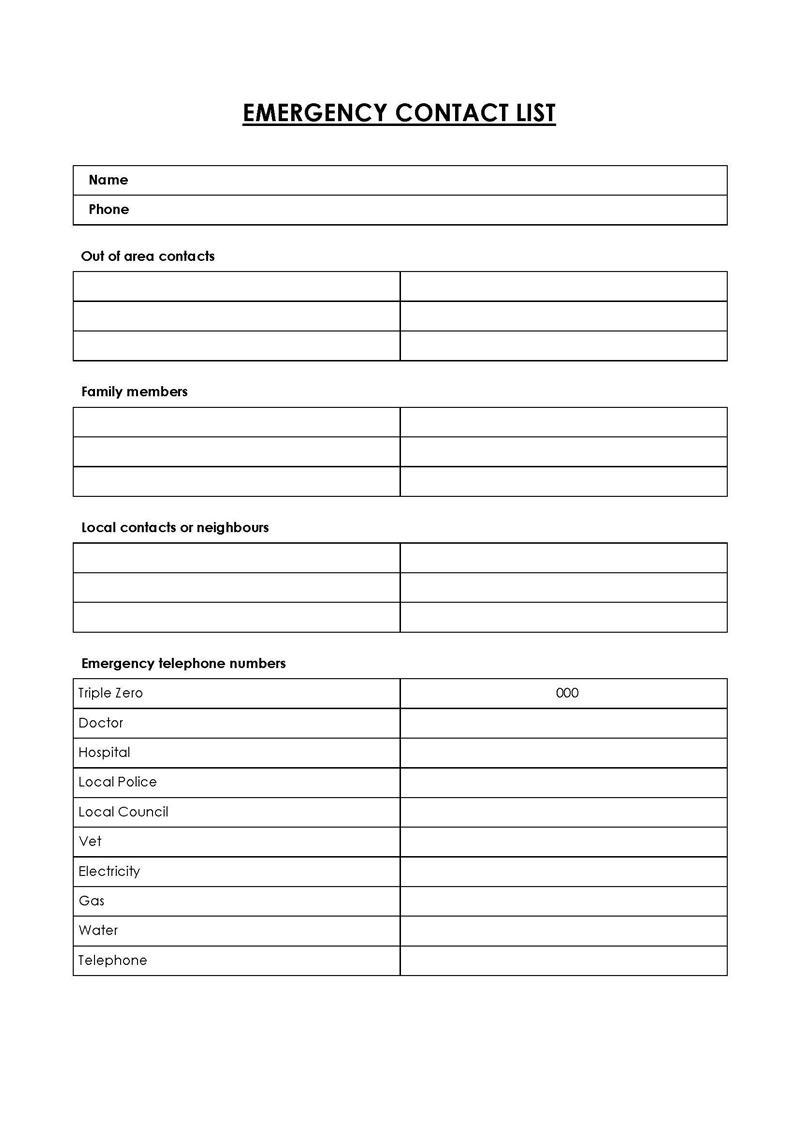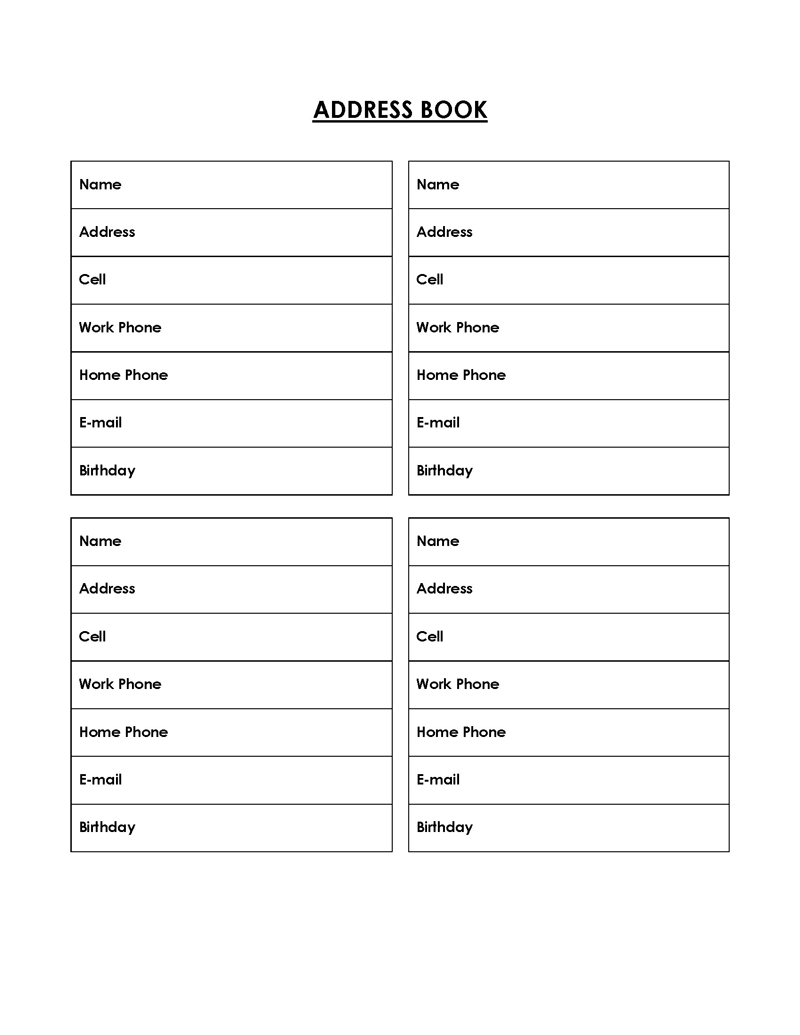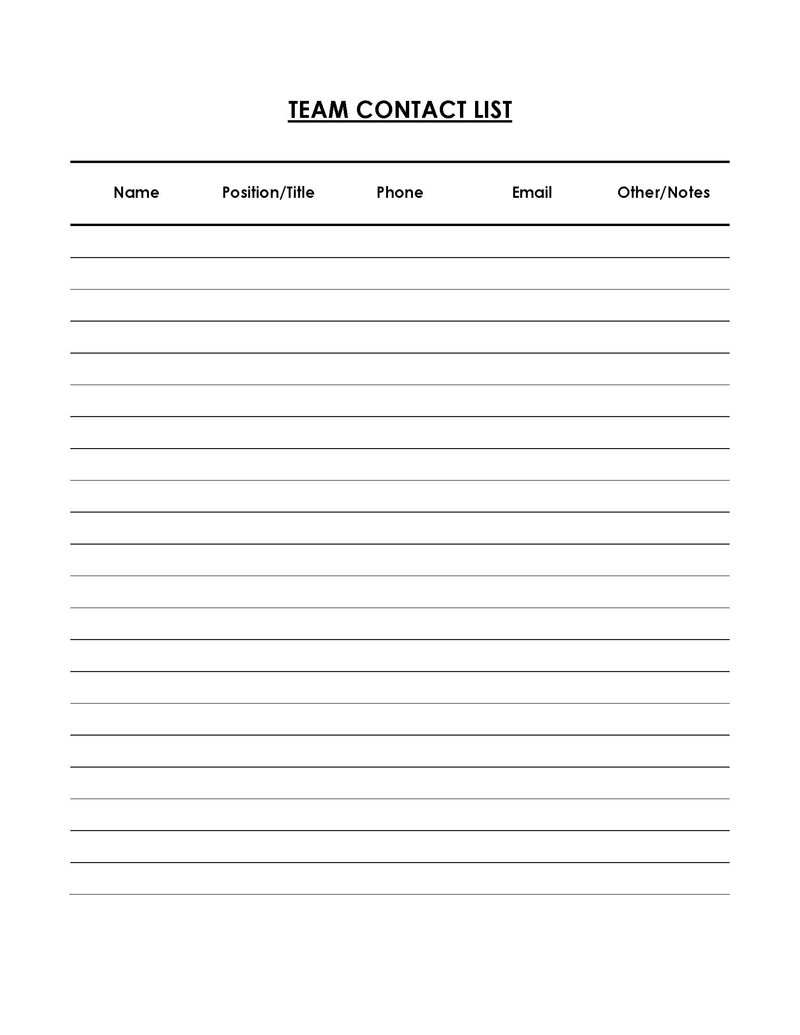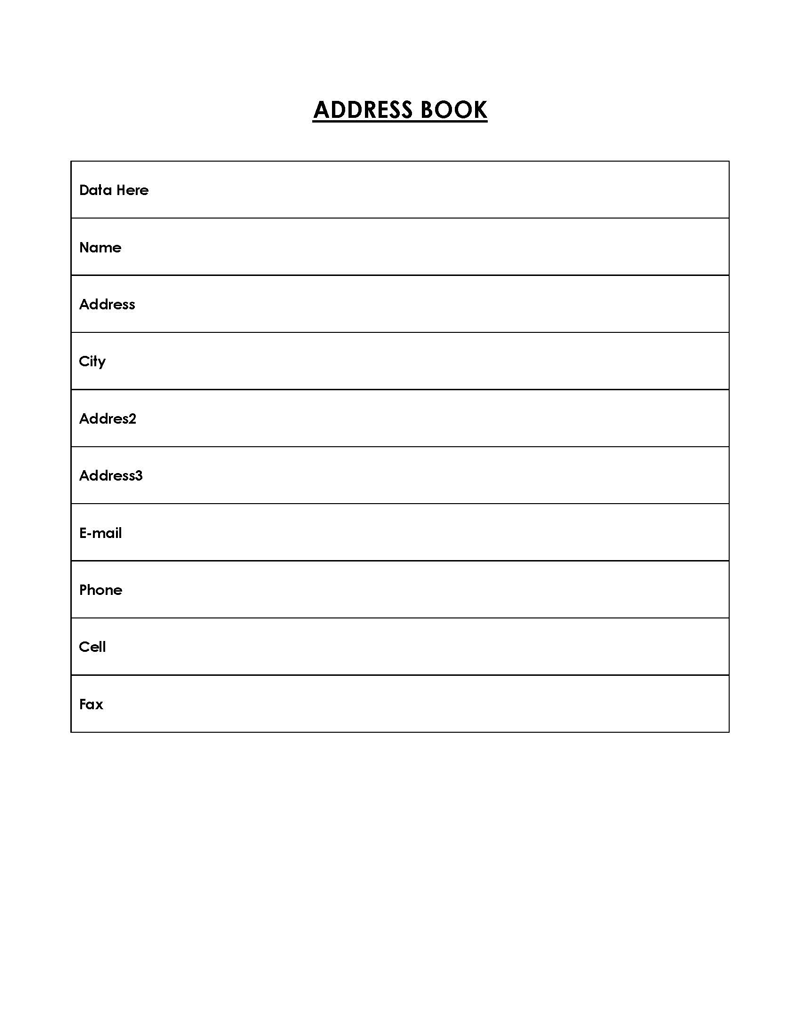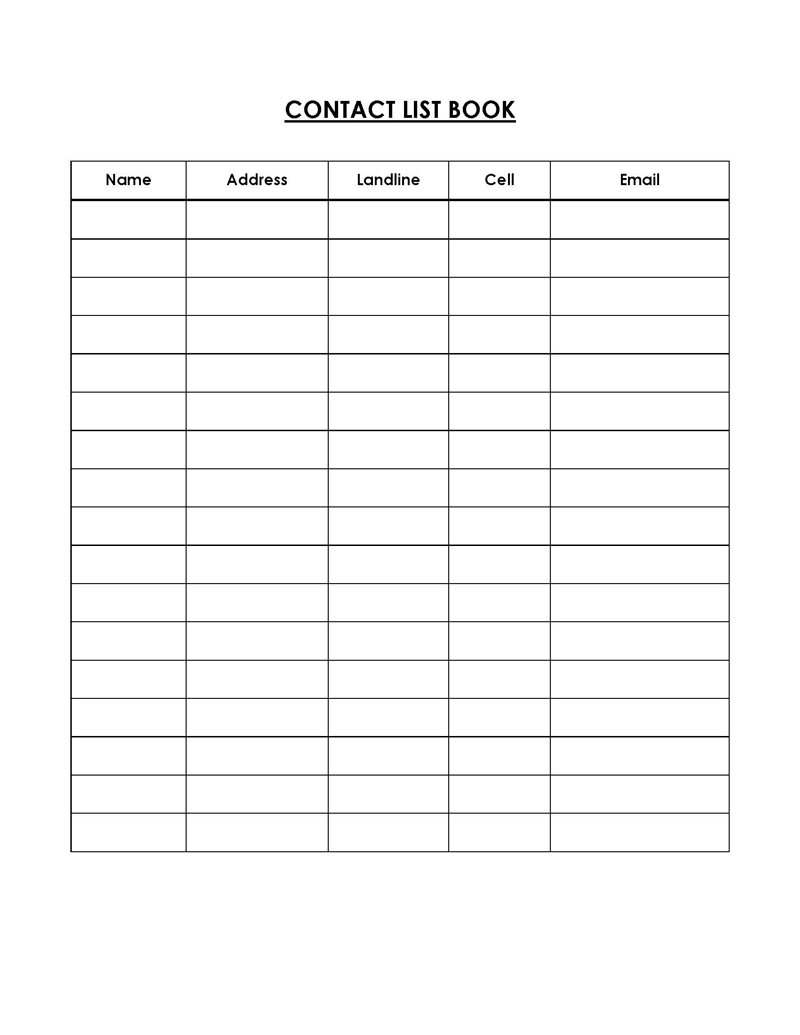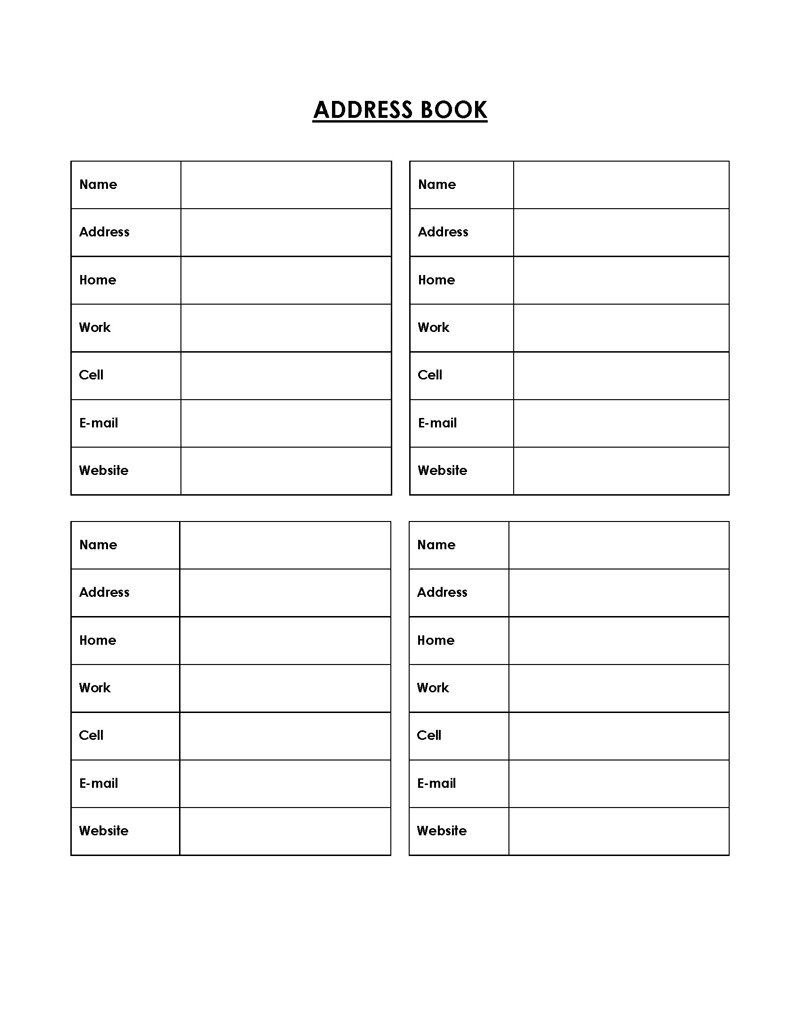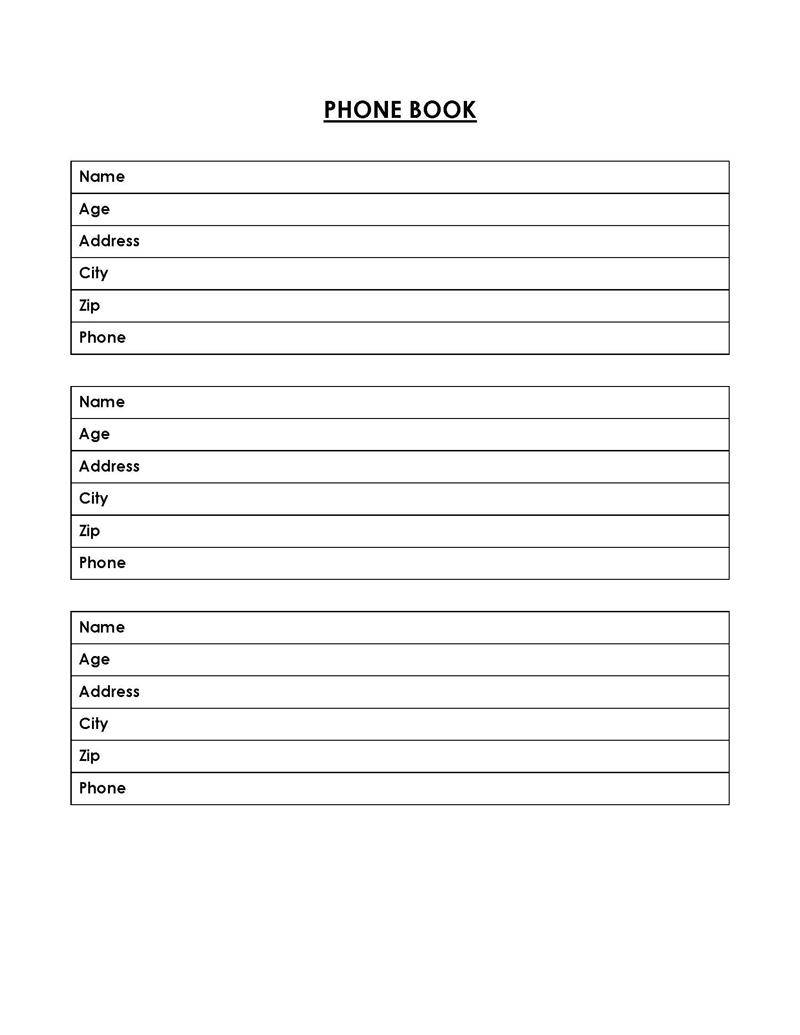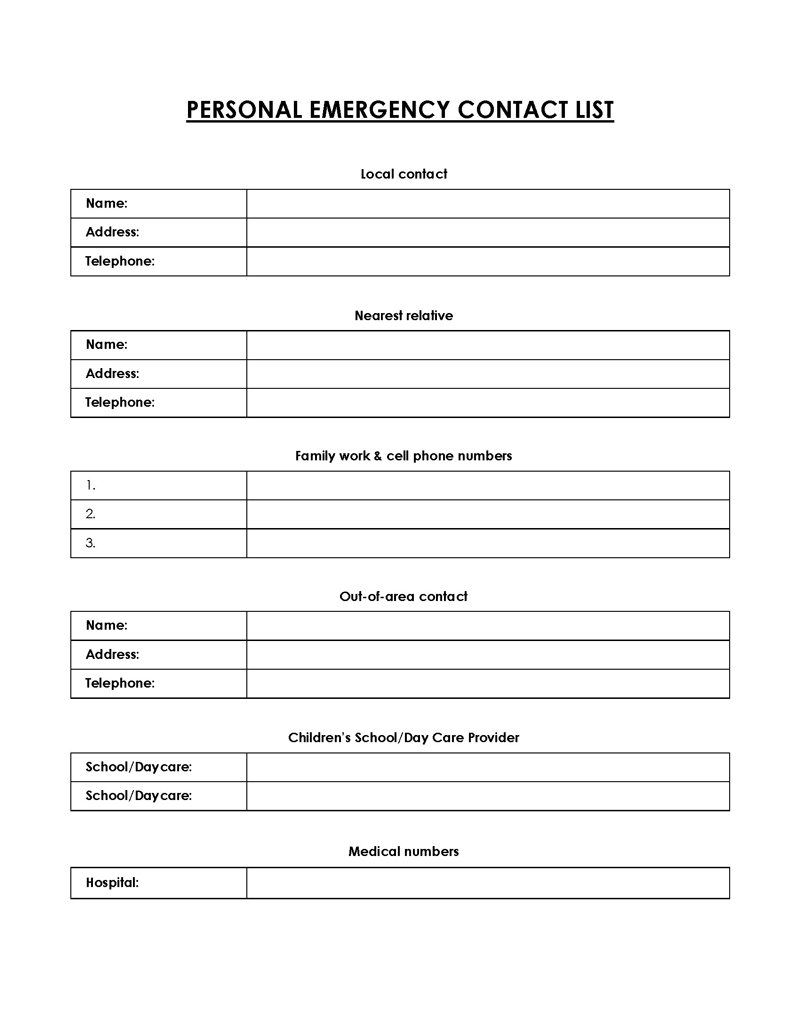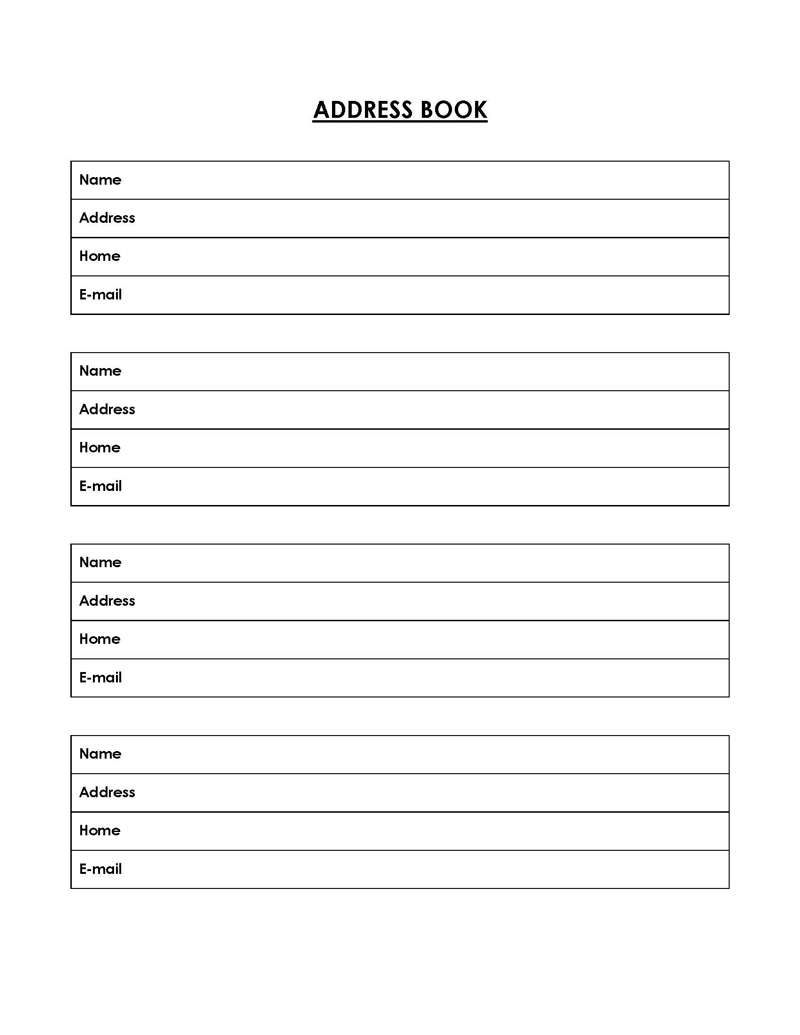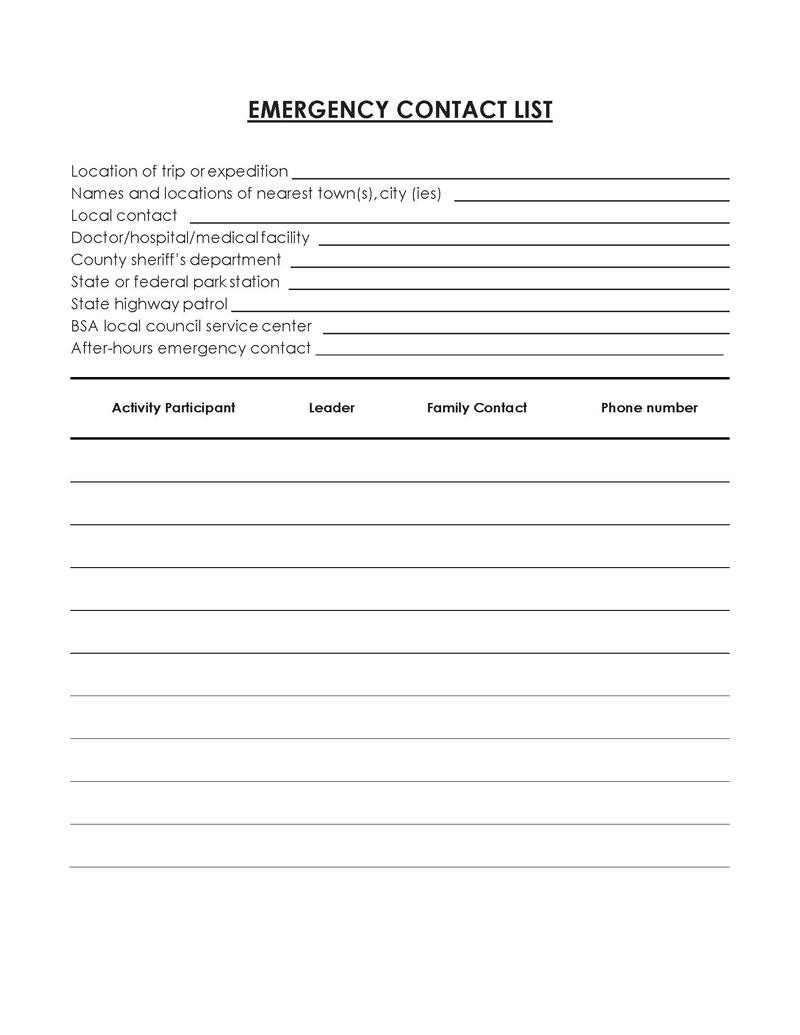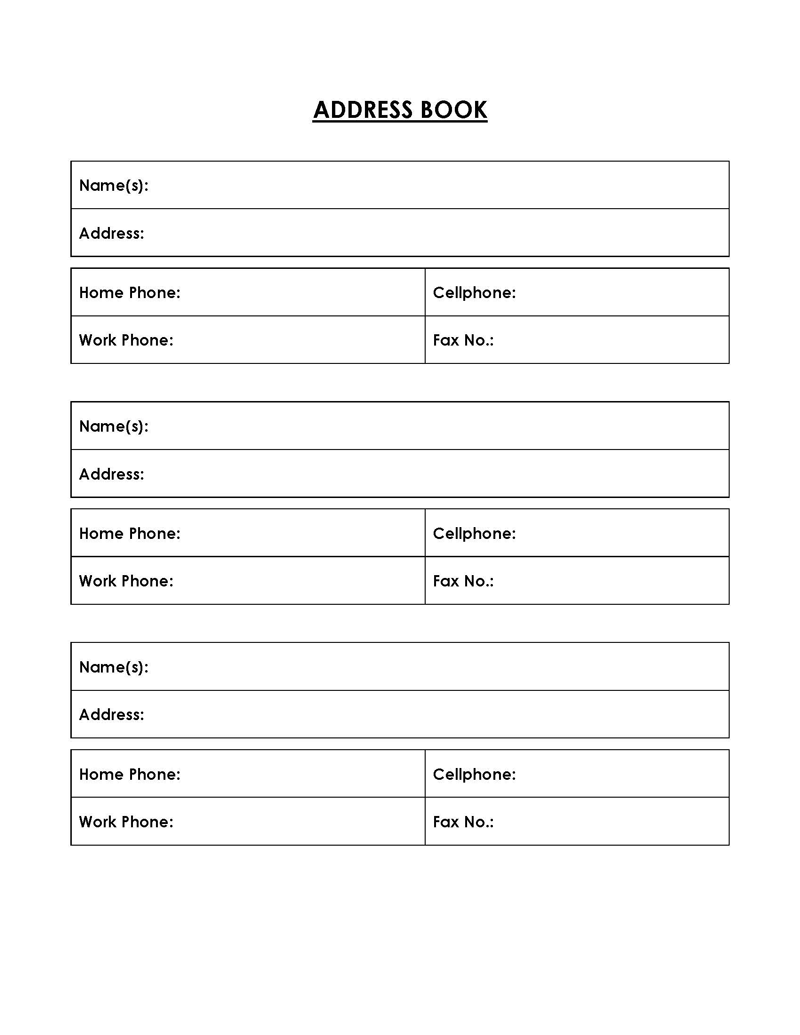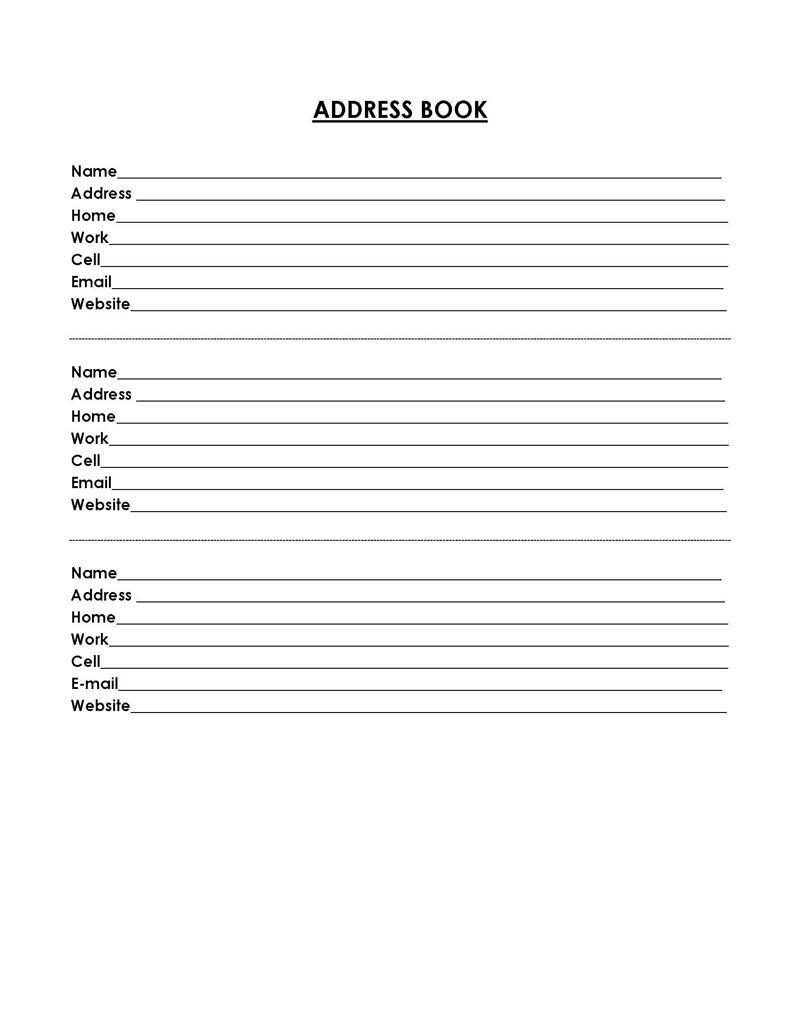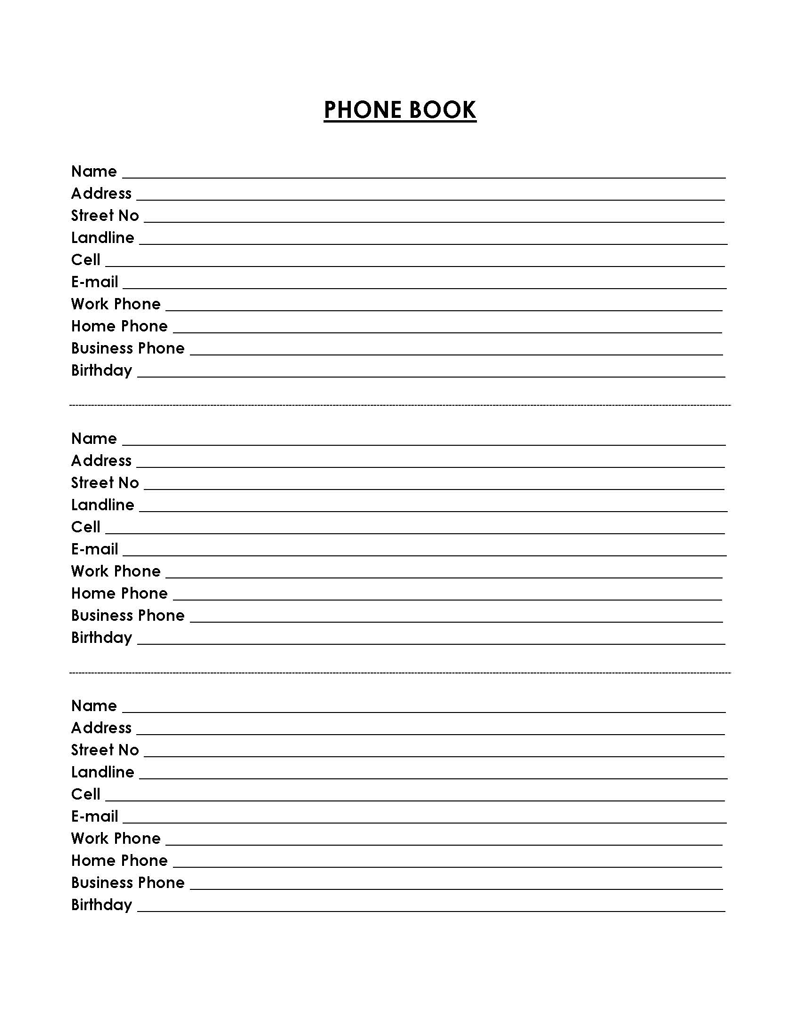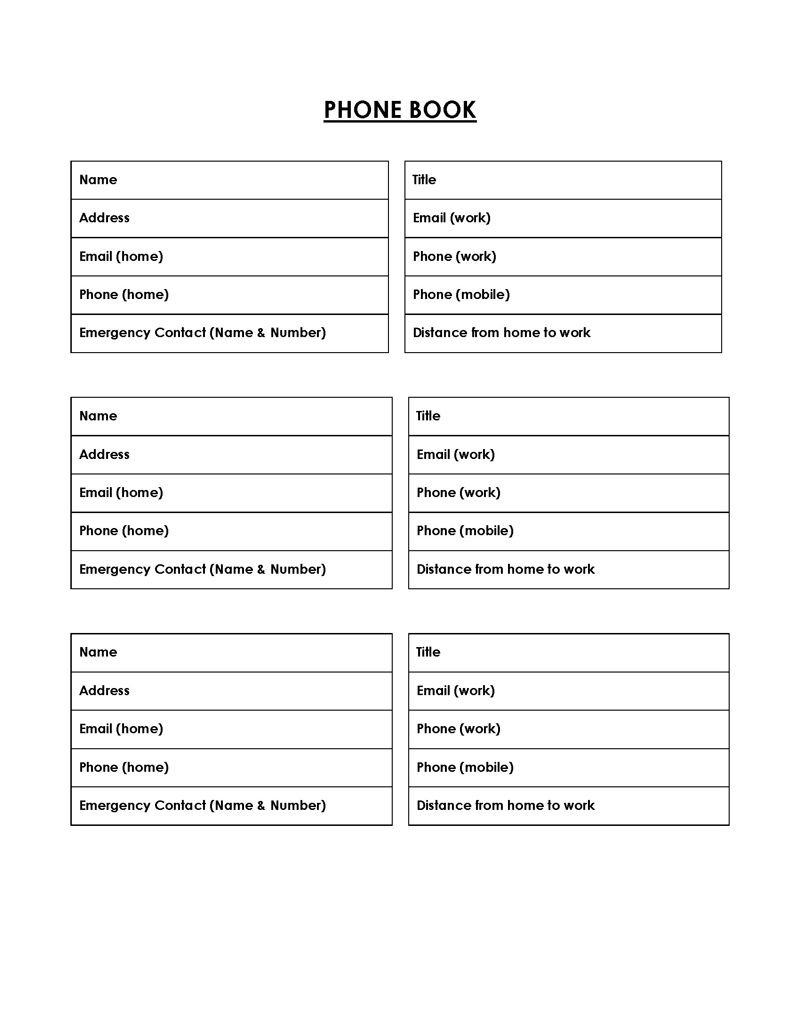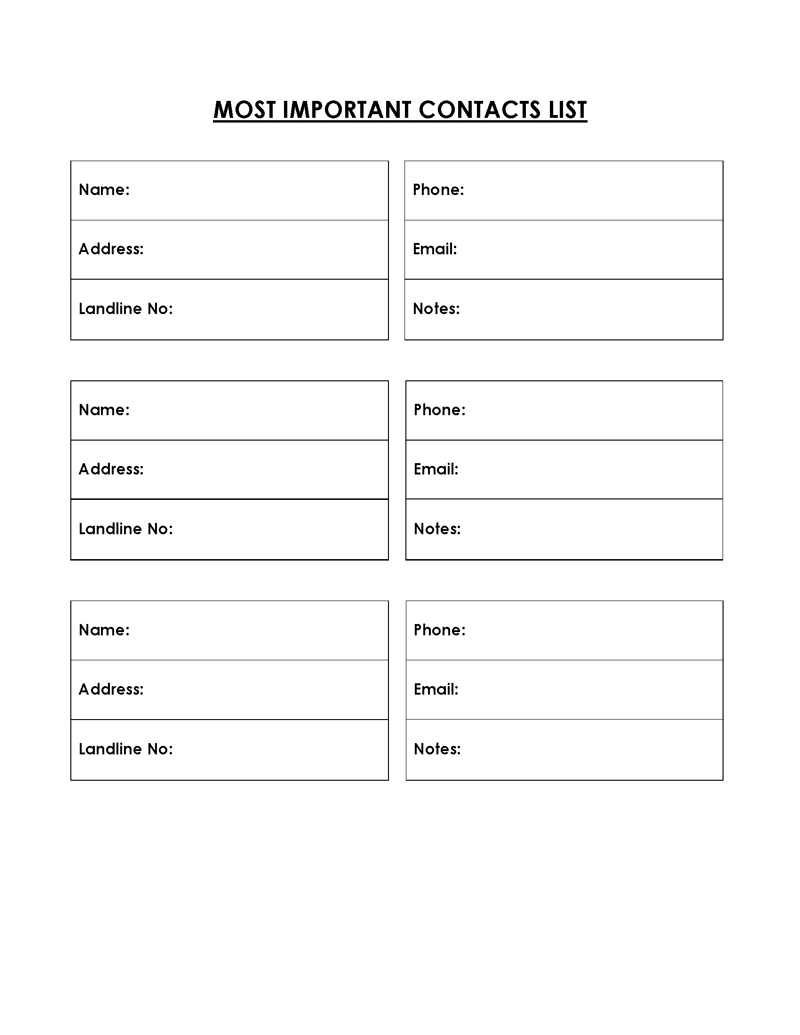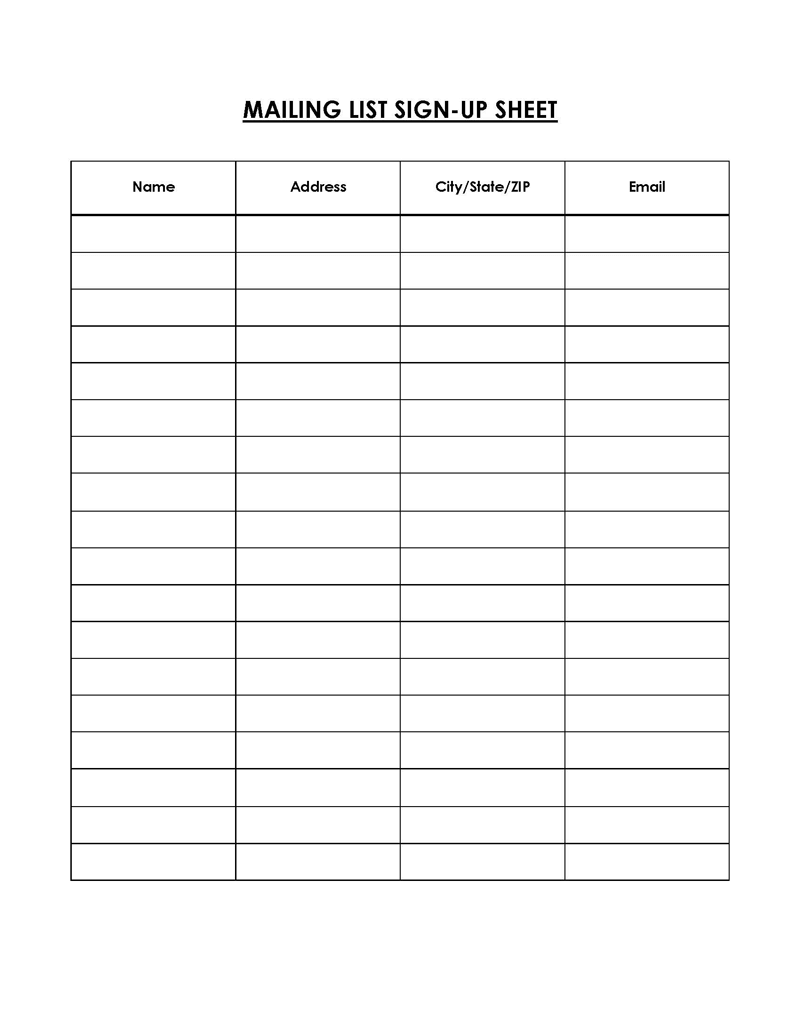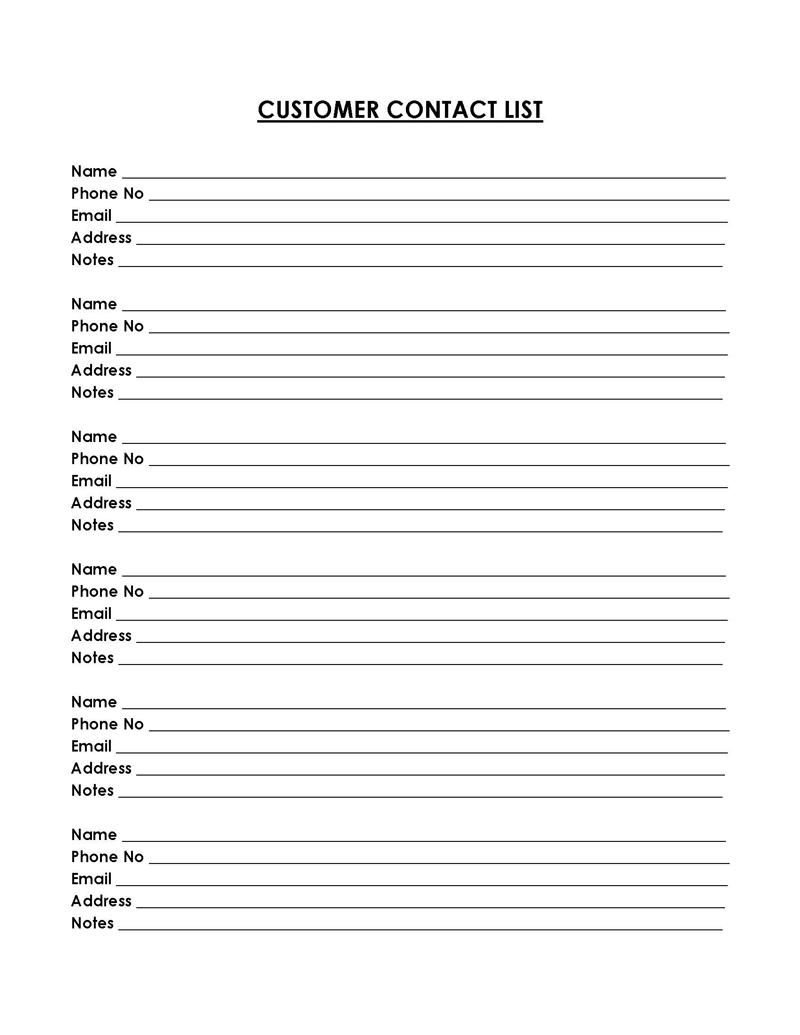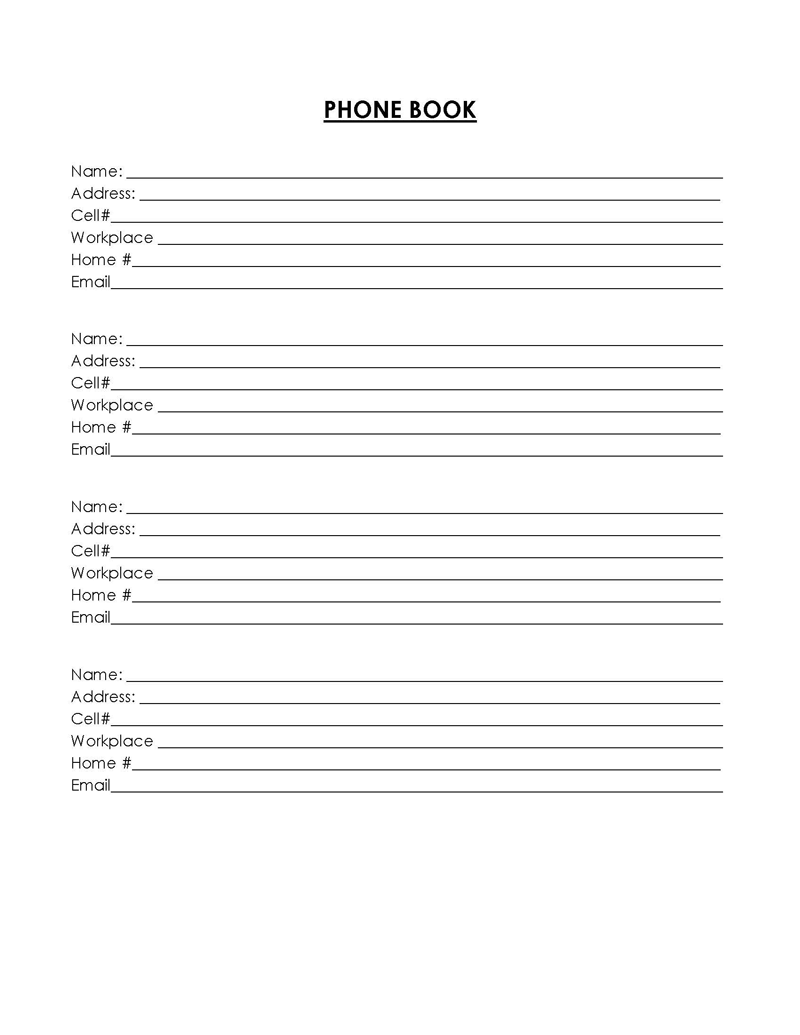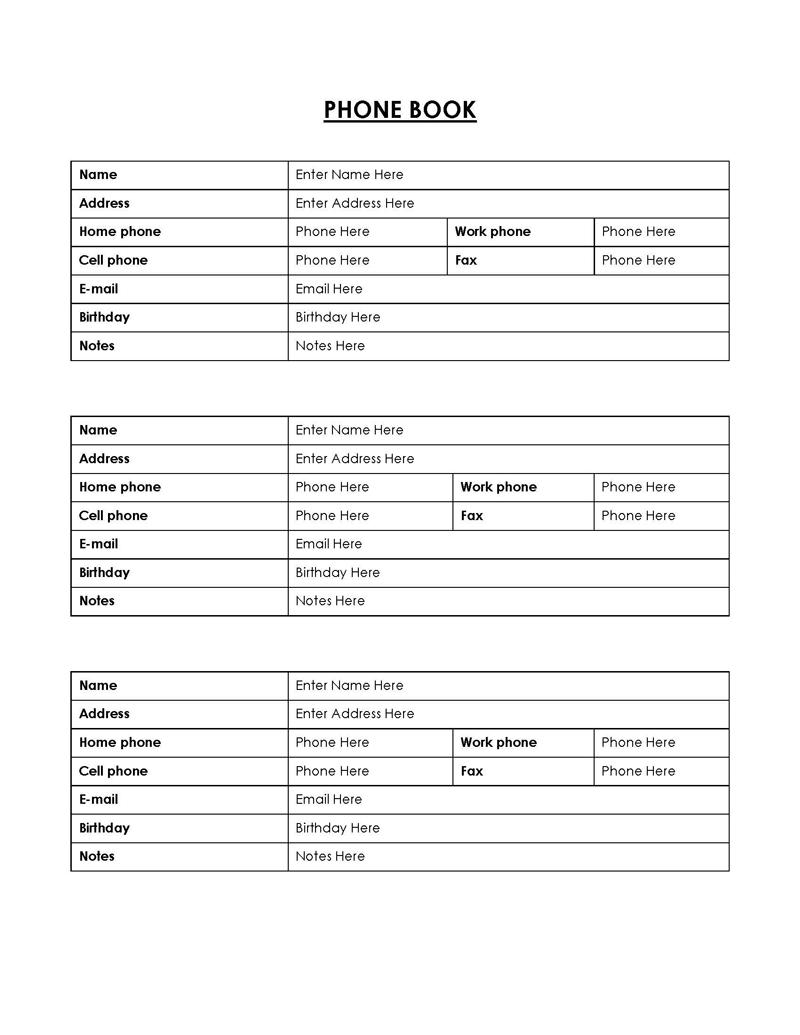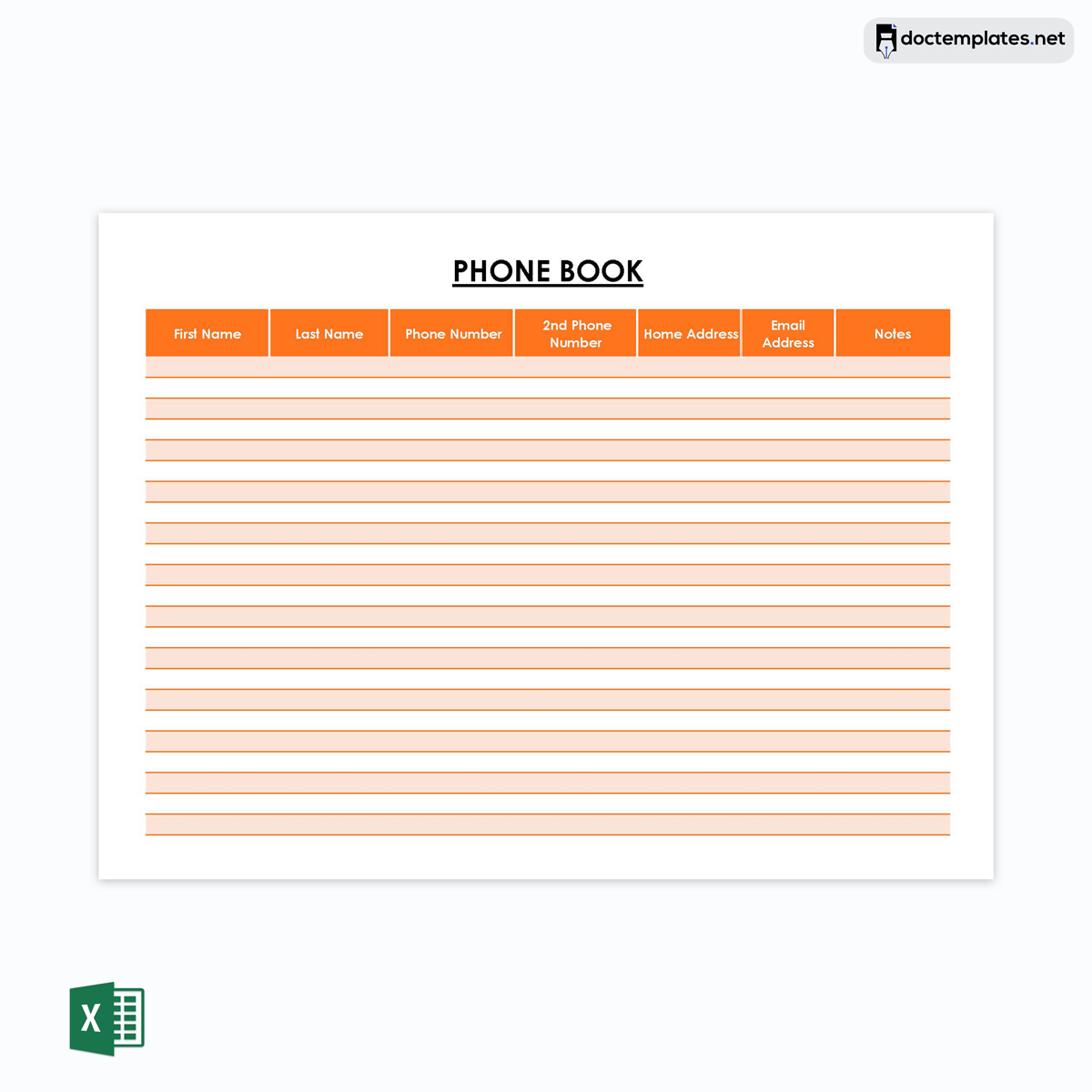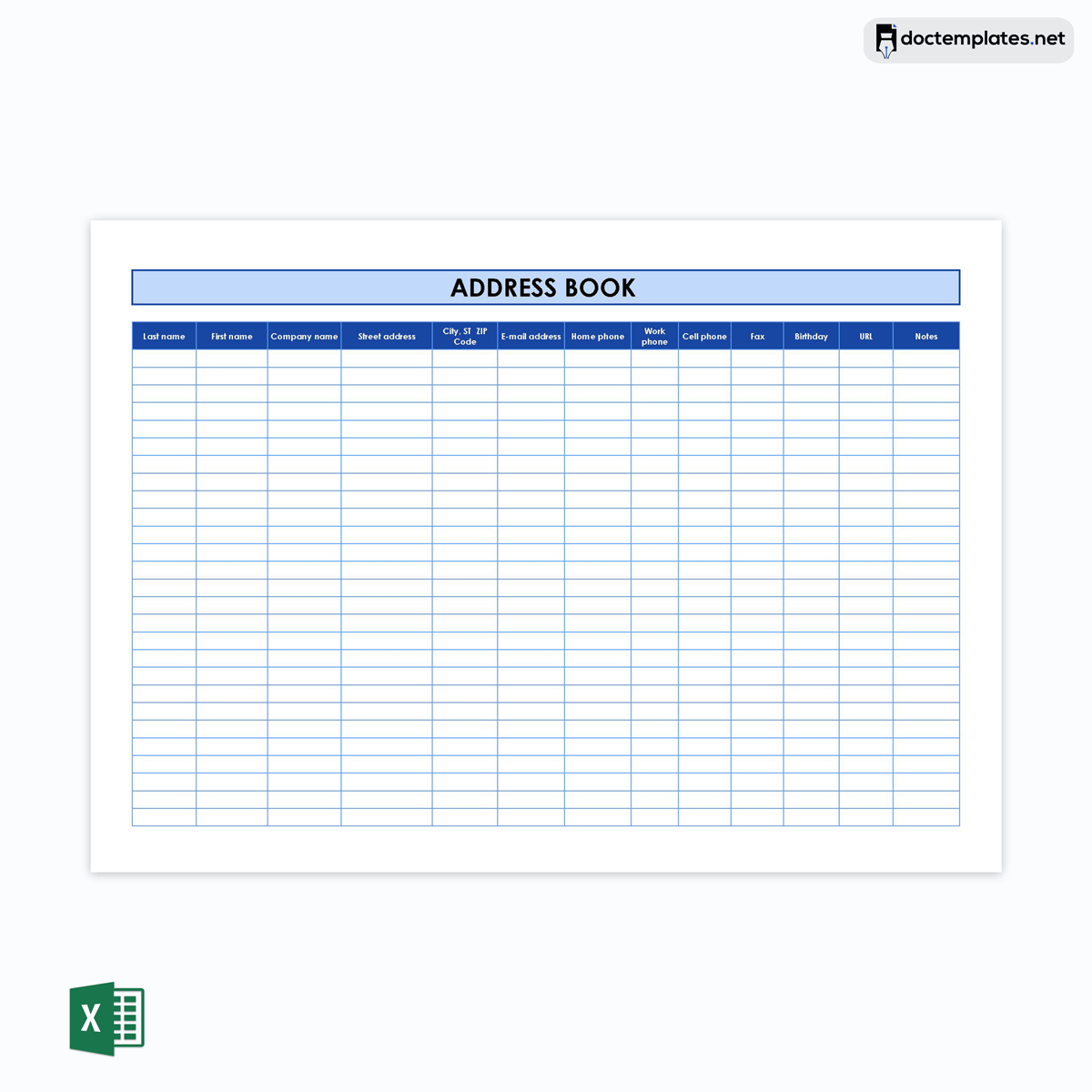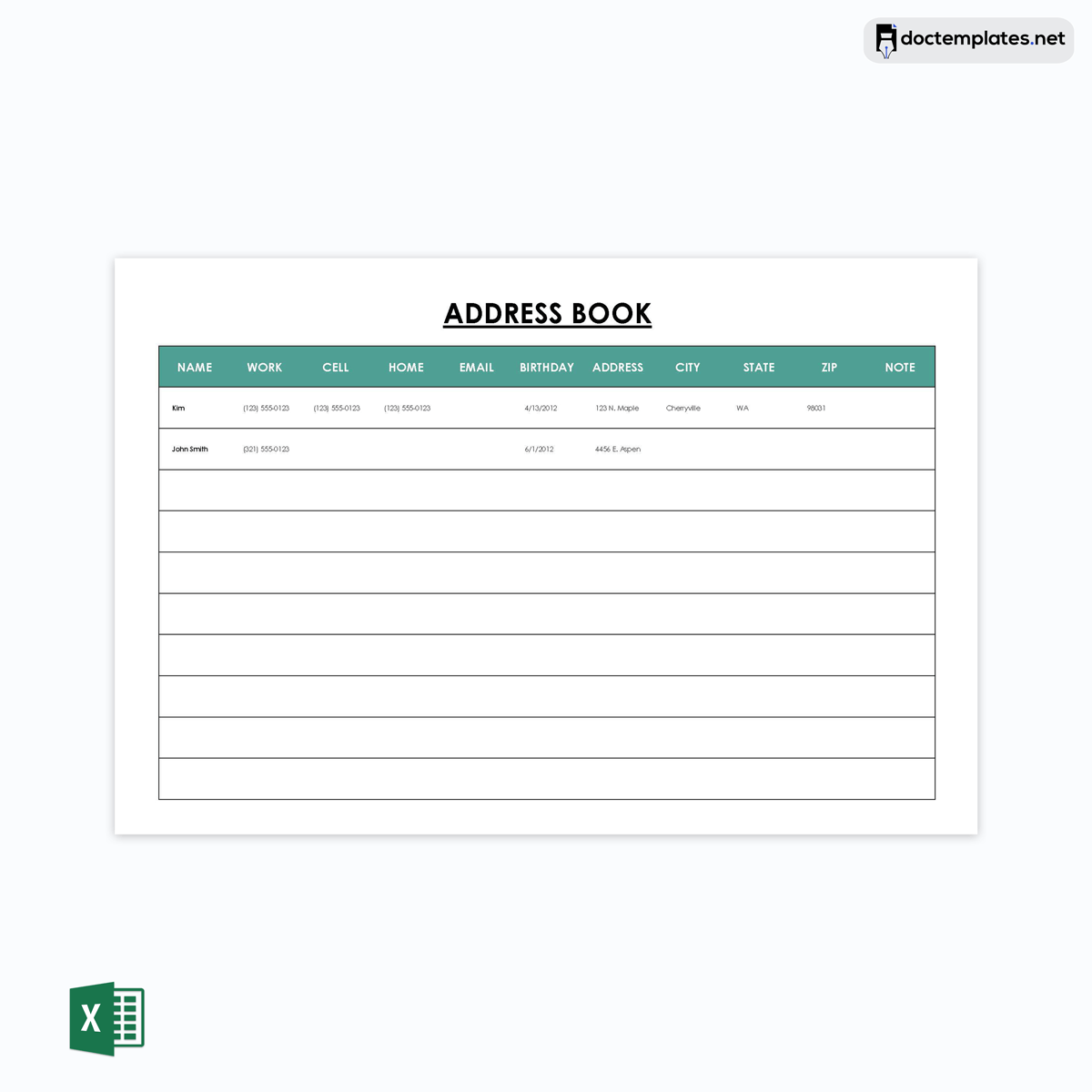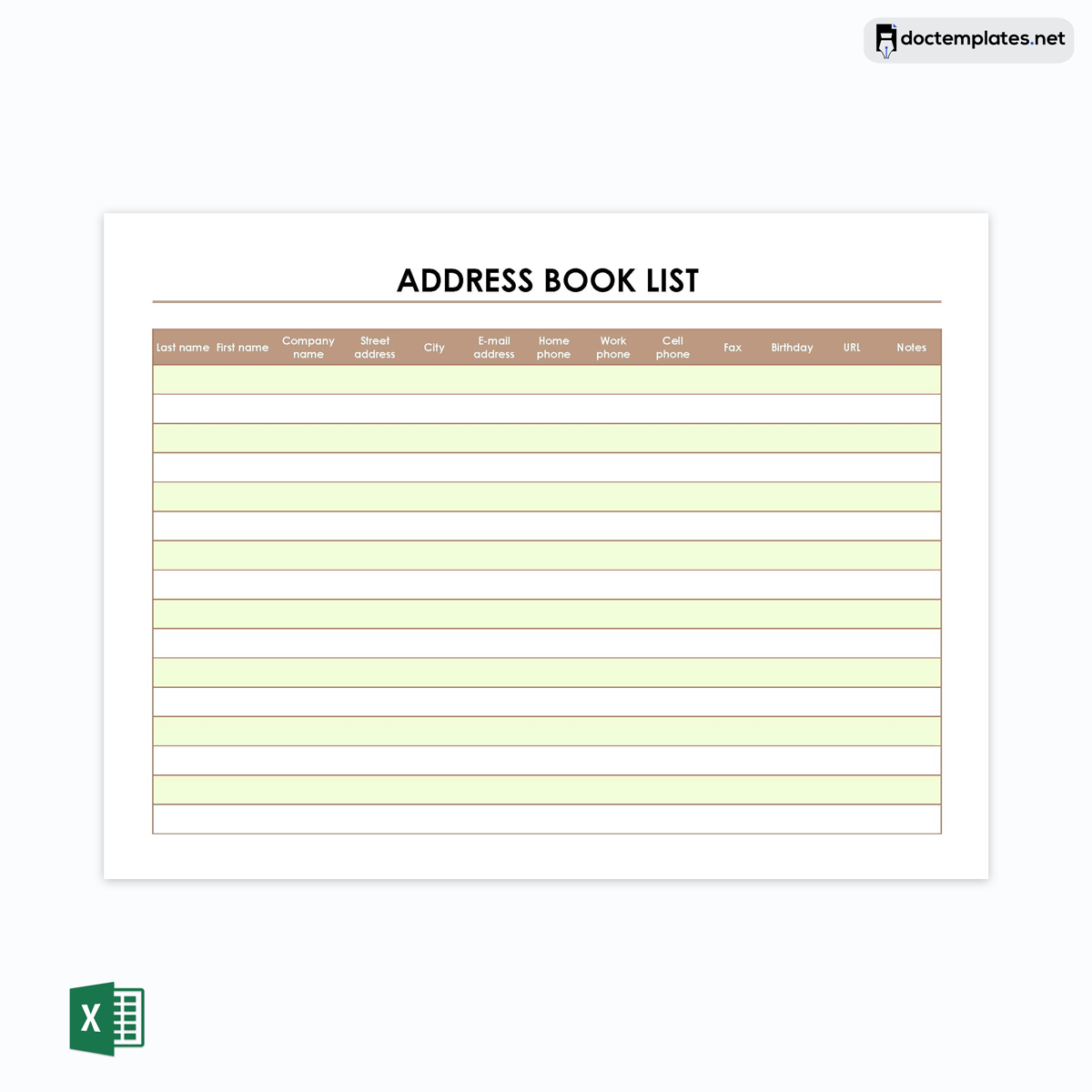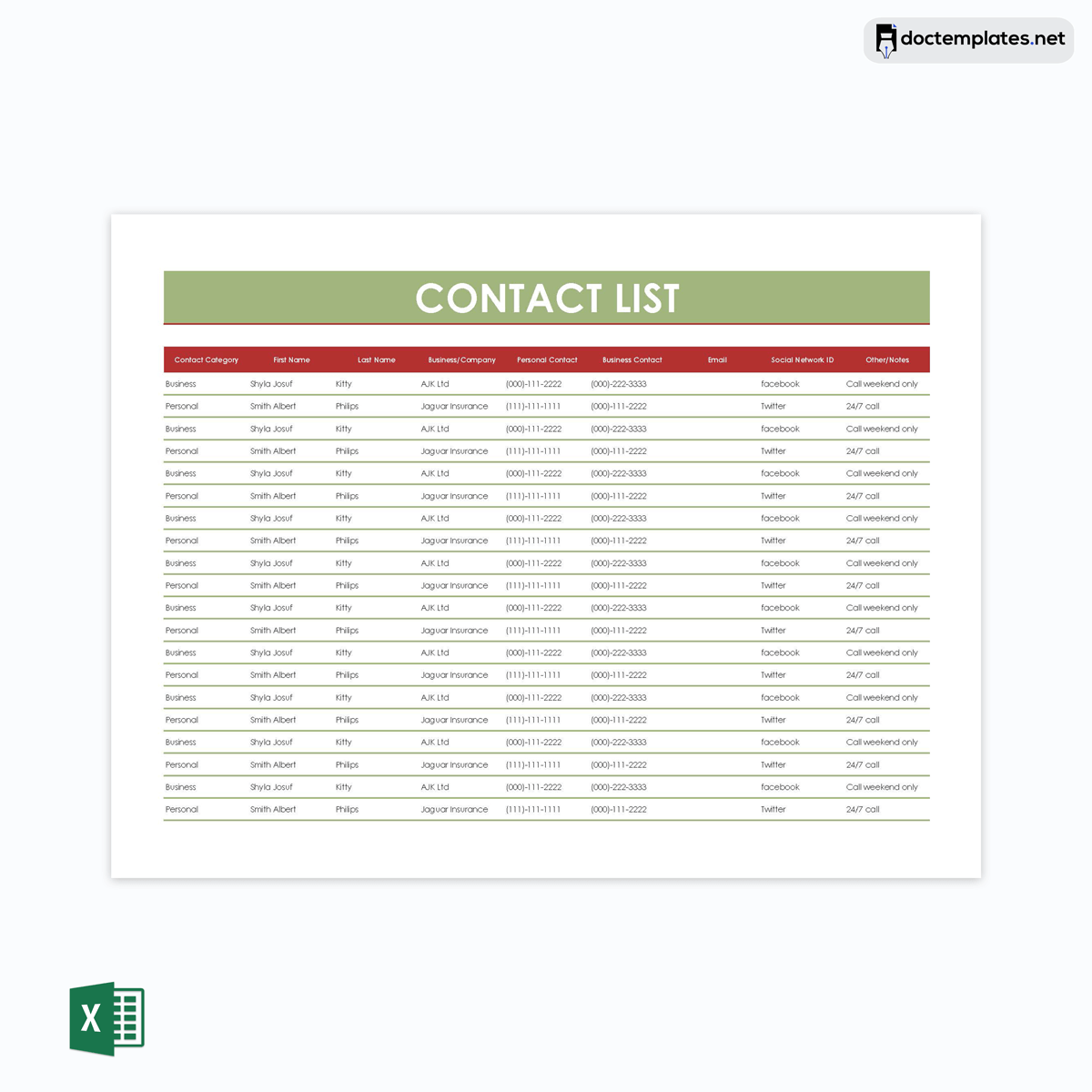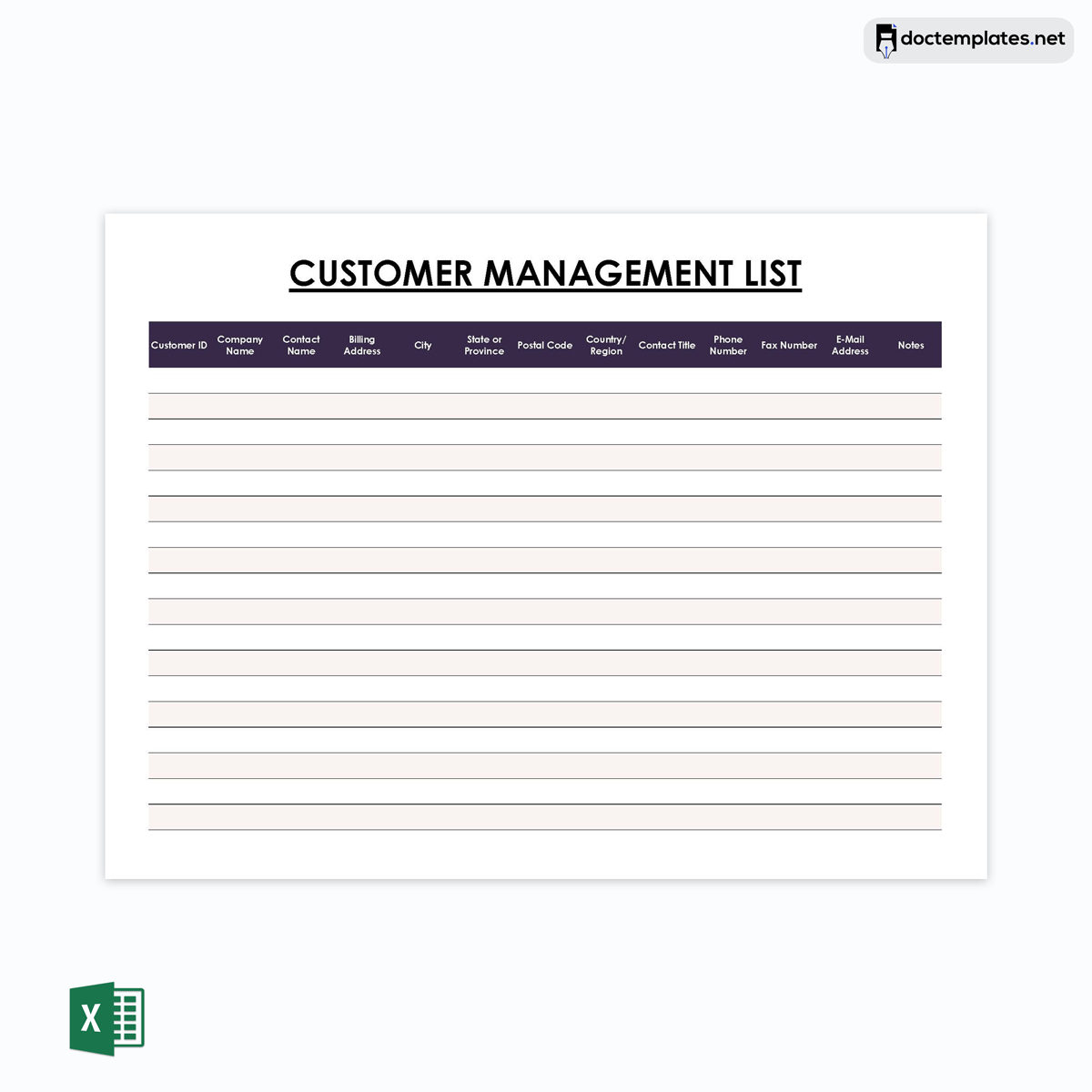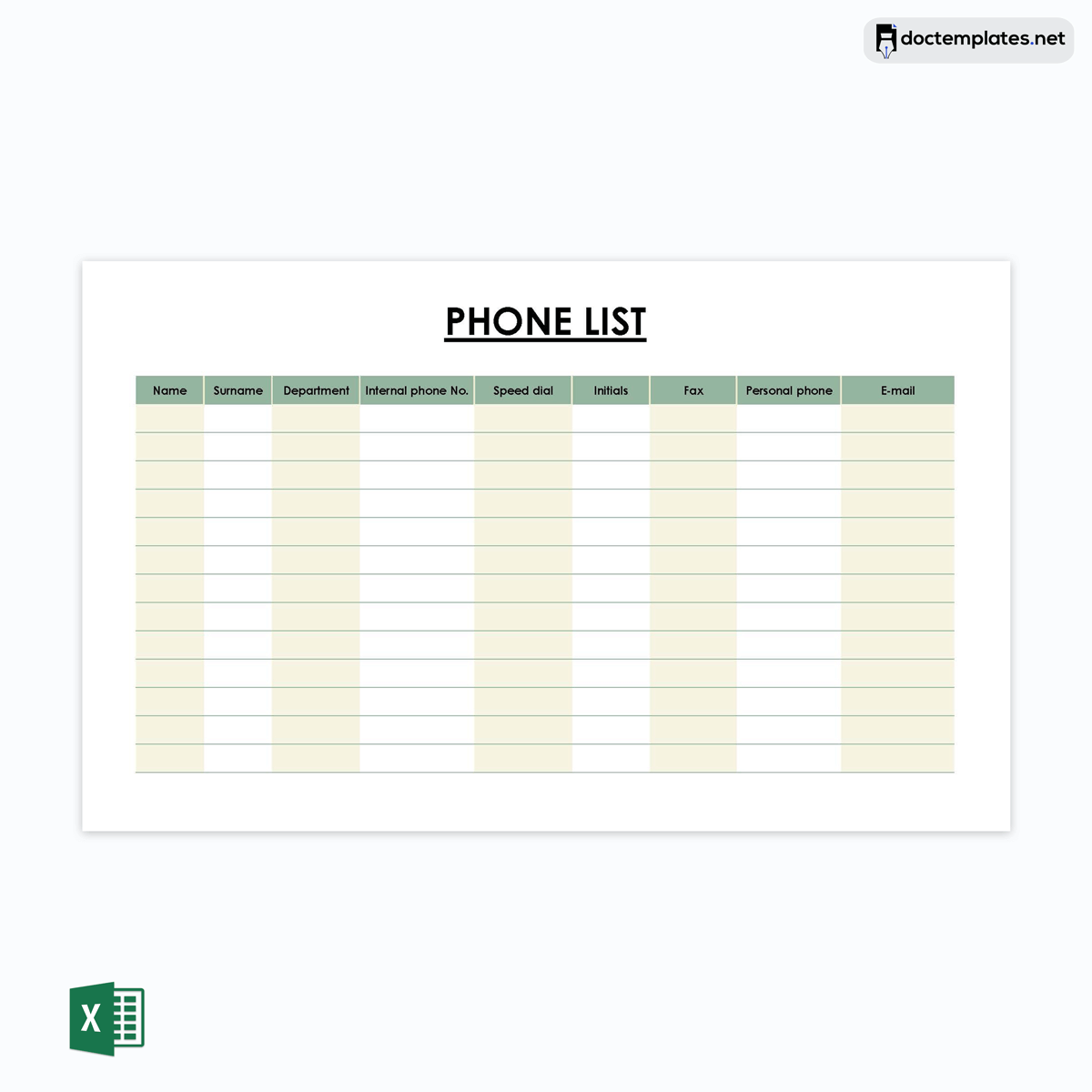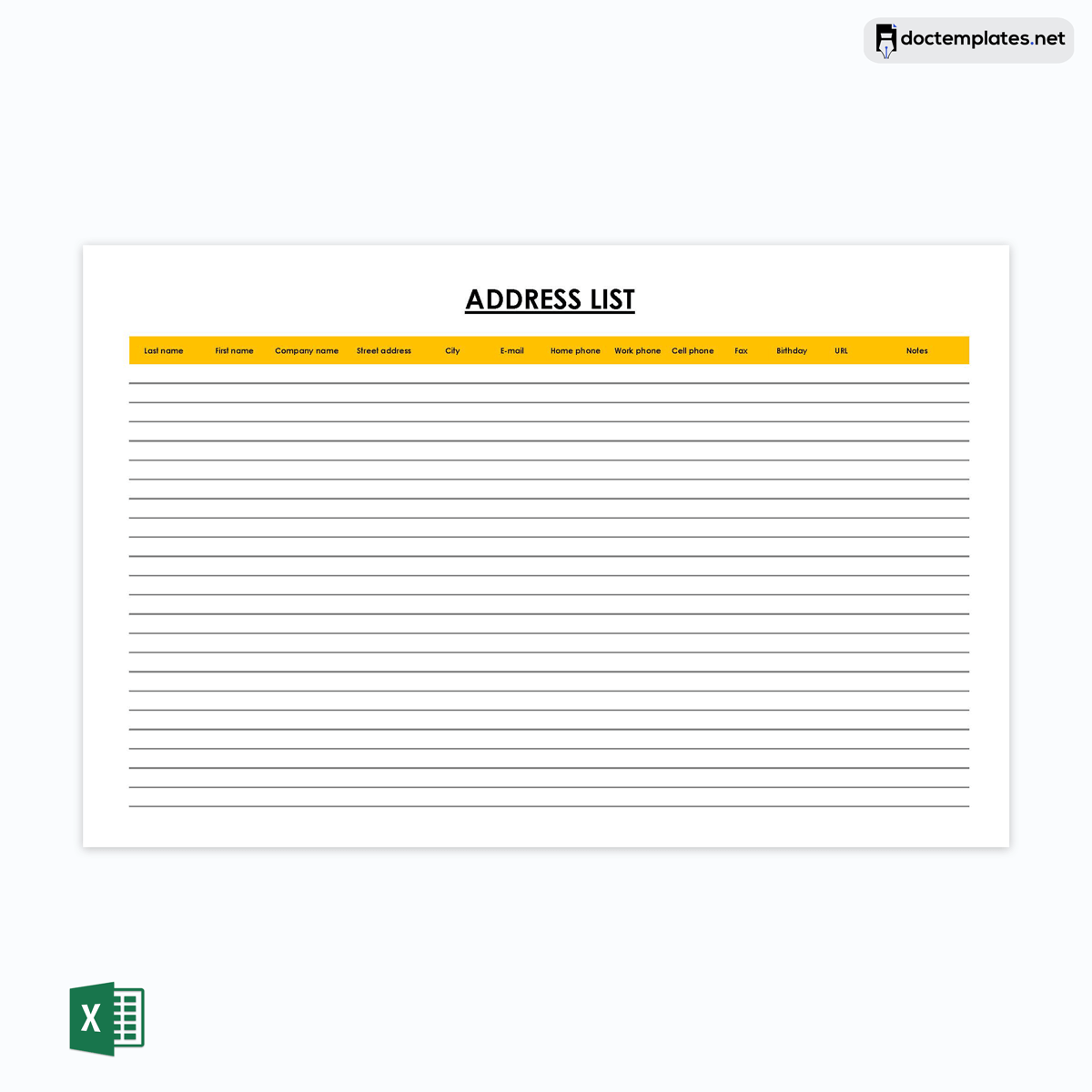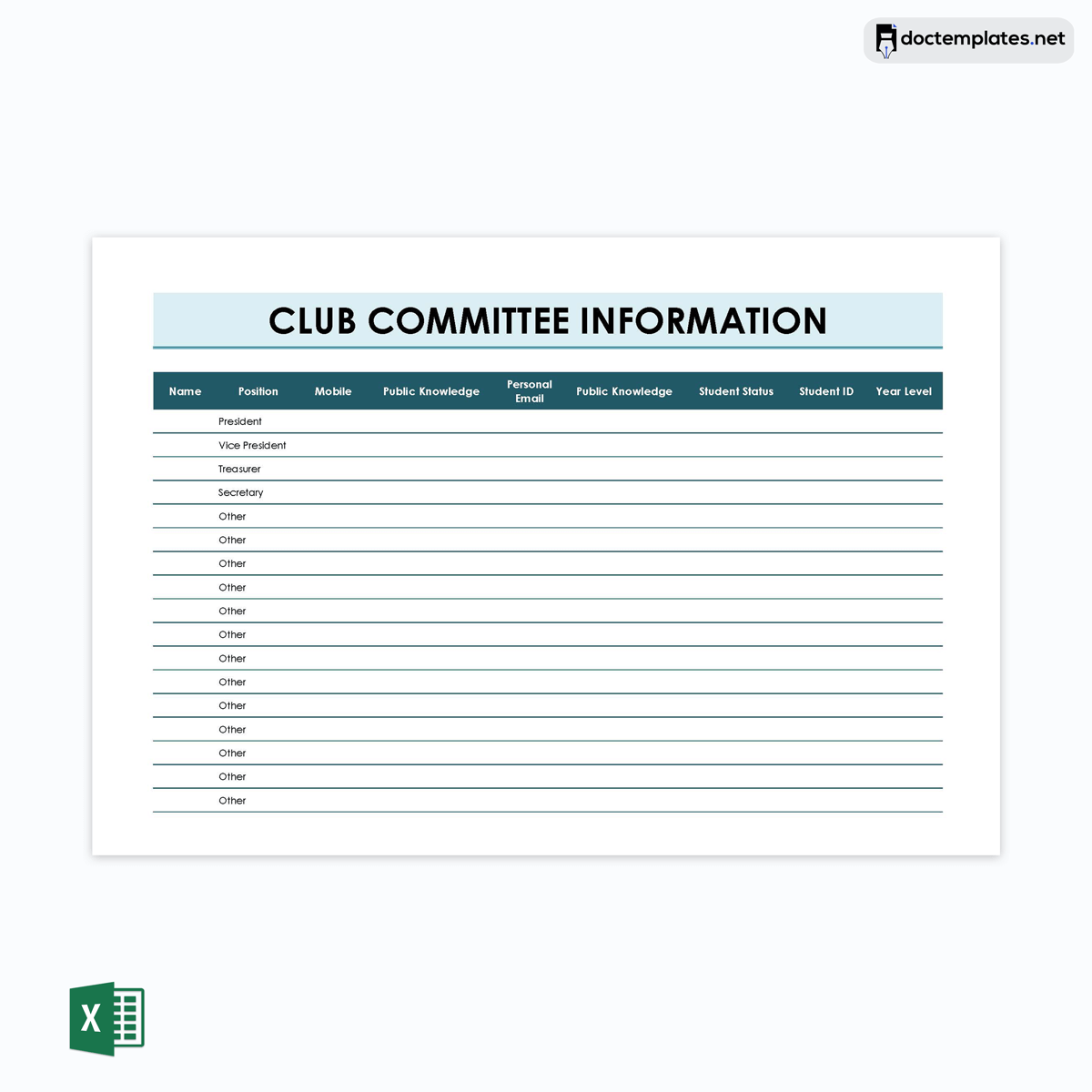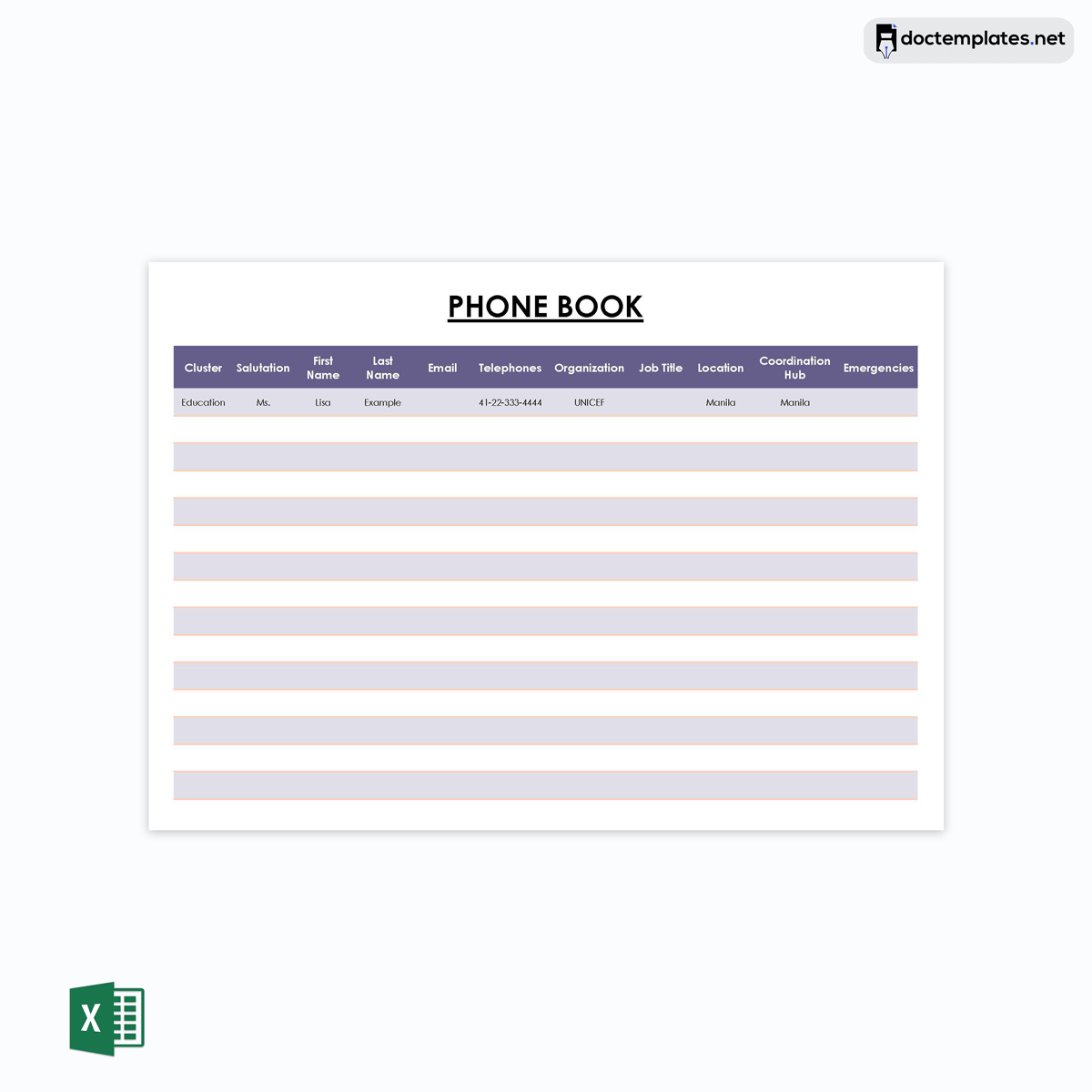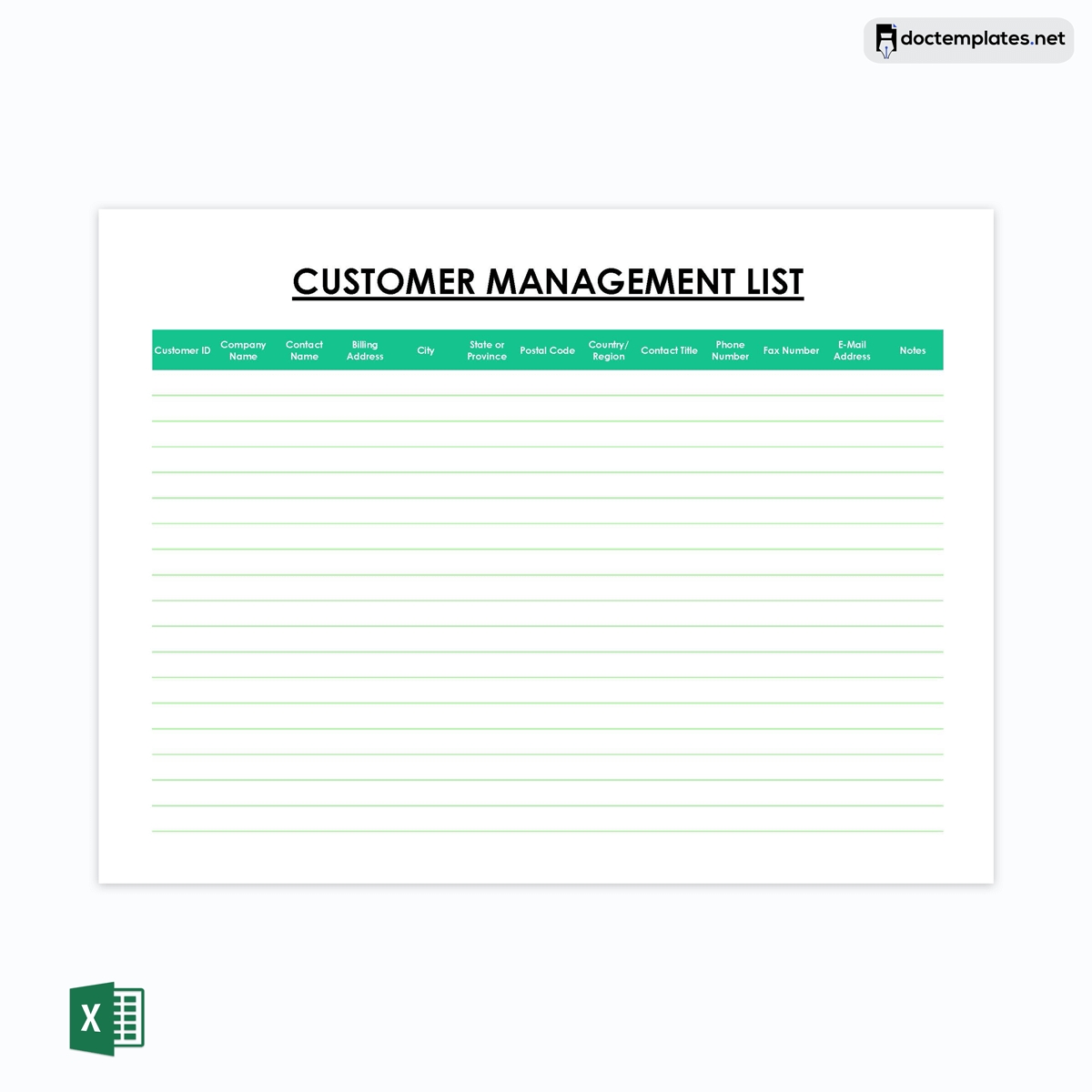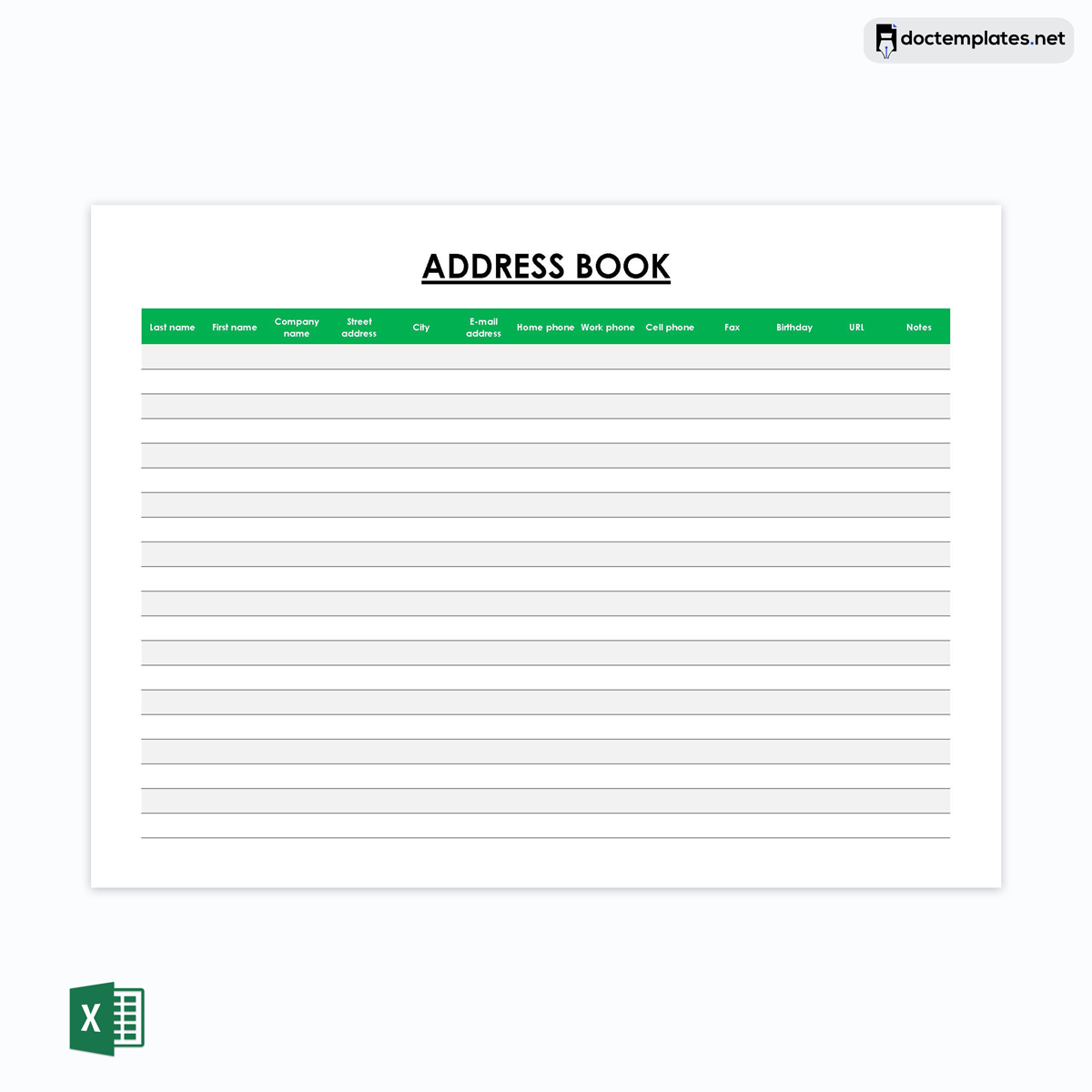An address book is a database for storing people’s names, addresses (mailing and email), phone numbers, and other identification details such as job titles.
It can be created by an organization or for personal use. It simplifies access and management of contacts. It can be in physical format (a physical notebook) or electronic format (a digital database). Both types can be created using free templates on platforms such as Microsoft Excel and Google Sheets.
Physical phone books offer a tangible experience, require no technology or internet access, and serve as a backup option. However, they have limited storage capacity, can be challenging to organize, and risk wear and tear. On the other hand, digital address books offer unlimited storage, easy organization, and accessibility across multiple devices. They integrate with other digital tools, provide backup options, and offer time-saving features. However, they require technology reliance, may pose data security risks, and involve a learning curve. The choice between physical and digital address books depends on personal preferences, convenience, and individual needs.
What is an Address Book Template
A template for an address book is a fillable blank document meant to assist users in recording, organizing, storing, and viewing contacts with ease.
It has placeholders (rows and columns) for names, addresses, emails, and phone numbers. While individuals can use it to record personal contacts, businesses, and organizations can use it to store the contact information of stakeholders, suppliers, and customers.
You can download free templates from our site to create your phone book. You can make your own physical phone books using these printable templates. They are also easy to customize to suit your specific needs.
Why You Should Use Template for Making an Address Book
Templates have a lot of benefits when creating a collection of contacts. It is important to understand these benefits before selecting appropriate templates.
These benefits are as follows:
Organization
A template is pre-formatted and contains placeholders for different elements of a directory This ensures information is organized rationally, logically, and consistently to produce a document that is easy to navigate.
Accessibility
A template can be stored in the cloud or on a shared drive, making it easy to access it from any device or location. This can be particularly useful if you need to share the information with others.
Customization
Templates are usually customizable. You can add or remove fields, change the layout, or add color-coded categories. This is useful for creating address books that resonate with the brand image of the business and are easy to navigate.
Time-saving
You only need to add the data once the appropriate template has been chosen. With templates, you do not have to spend time creating the layout yourself. They typically include pre-defined fields such as name, phone number, email address, and address, allowing you to simply fill in the relevant details.
Consistency
Templates also offer consistent formatting, making it easier to read and locate information. By using a template, you can ensure that all the contacts are recorded consistently, using the same format and style. This helps maintain the accuracy and integrity of the data.
Key Components of an Address Book Template
When creating a template for an address book, it is important to first determine the information you want to capture. The specific details you include will depend on whether you are creating a personal, business, class, family, or project contact register. However, certain components are common in most templates.
These include the following:
Name
A name is the most basic identification information and an essential element of the directory. The name field in the template allows you to record the name of the person or organization you are contacting. You may also want to include separate fields for first and last names to facilitate searching and sorting.
Address
The correct address of your contacts is useful if you need to mail something or visit the contact in person. This allows you to record details of the address, including the street address, city, state, and ZIP code.
Phone number
Phone calls are a convenient means of communication. So, it is important to include an essential field in your template to record the phone numbers of your contacts. You can also include separate fields to add the country code for international phone numbers or area codes to indicate a specific region within a country.
Email address
With email being a primary mode of communication in today’s digital age, having this information readily available in your address book can save you time and effort when sending emails or contacting individuals electronically. It ensures that you have a reliable record of their email address, making it easier to stay connected and communicate efficiently. Emails are suited for both personal and professional correspondence. Therefore, your template should have placeholders for recording email addresses.
Company or organization information
Including the company or organization name associated with a contact is essential. This information helps you categorize and differentiate contacts based on their professional affiliations. It is particularly useful when managing business contacts or networking connections.
By including this information, you can easily identify and locate contacts, especially when you need to contact individuals within a specific company or industry. This allows for efficient organization and facilitates effective communication by providing context and relevance to each contact entry.
Job title
It is important to record the job titles of people in your network. So, your template should have a field for documenting your contact’s profession.
Birthdays or anniversaries
You can also include birthdays or anniversaries, especially for your personal contacts. This helps to remember when to wish or congratulate them. An excellent template, therefore, should have an entry for a birthday or anniversary (day, month, and year).
Additional notes
Additional notes in a template provide a space to include any relevant information or personal remarks about the contact. These notes can serve as a reminder of specific details or preferences, such as the nature of the relationship, important dates, interests, or any other pertinent information that may be useful for future interactions. Including additional notes allows for a more comprehensive and personalized approach to managing your contacts.
Free Templates
You can opt for our pre-built printable templates that contain all the basic components of an address book. You can download these templates for free and use Excel or any other appropriate software to customize them according to your preferences.
Choosing the Best Method to Create Your Address Book Template
It should be a priority to have a contact register that easily stores information and makes it readily accessible whenever needed. Creating a template can be done using various methods, depending on your preferences and available resources.
Below are guidelines for some common methods:
Microsoft Word
MS Word is a popular tool for creating and editing documents for professional or personal documentation. You can opt to use it to create a template for the following reasons:
- User-friendly. MS Word has a simple and functional interface making it user-friendly.
- Customizable. The program offers a wide range of design and formatting options, making it easy to create a customized template that suits your needs. Also, with MS Word, you do not need advanced design skills to create a professional-looking document.
MS Word allows you to quickly and easily edit and update the content of your template. You can add or remove columns, rearrange information, and make changes as needed without much effort.
- Sorting and Filtering Capabilities. With MS Word, you can sort and filter your address book entries based on specific criteria. This feature is useful when you want to organize and search for contacts based on their names, addresses, or any other data.
- Integration with Other MS Office Tools. MS Word seamlessly integrates with other MS Office tools like Excel and Outlook. This integration enables you to import or export contacts between applications, making it convenient for managing and synchronizing your document with other software.
- Print and share options MS Word allows you to easily print your template or share it electronically with others. You can save it as a PDF or send it via email, facilitating easy distribution and sharing of your contact information.
Excel
Excel is also a renowned platform for generating functional templates. Excel will typically require more expertise than Word, but you can find tutorials online to help you add formulas and commands to make your template functional.
Here are some reasons why you should consider Excel for making your address book:
- Spreadsheet format. Templates in Excel are generated in spreadsheet format. A spreadsheet is well-suited for organizing and managing large amounts of data. This makes it convenient for recording the contact information of large entities.
- Sorting and filtering. Excel offers powerful sorting and filtering options, making it easy to find and organize contacts based on specific criteria.
- Automation. Excel allows you to automate certain tasks, such as generating mailing labels or sending email correspondence to multiple contacts simultaneously. Automation can simplify multiple use cases of contact registers, such as scheduling meetings and sending reminders for overdue payments or birthday wishes.
- Data Validation. Excel allows you to set up data validation rules, ensuring that the information entered in your template follows a specific format or meets certain criteria. This helps maintain data consistency and accuracy in your document.
- Calculation and Formulas. Excel includes a wide range of built-in functions and formulas that can perform calculations and automate certain tasks. You can use formulas to automatically calculate age, sort contacts by last name, or generate unique identifiers for each contact, among other things.
- Easy Import and Export. Excel supports importing and exporting data in various formats, making it convenient to transfer contacts to and from other applications or devices. You can import contacts from other sources or export your address book to share it with others or use it in different software programs.
- Scalability. Excel can handle large amounts of data, making it suitable for address books with a substantial number of contacts. You can easily add, edit, or remove entries without compromising the performance or functionality of your template.
Google Sheets
You can also opt for Google Sheets, which has multiple applications, especially when using your contact register in other management operations.
Here are some benefits of using it:
- Collaboration. Google Sheets is a cloud-based program that allows multiple people to work on the same sheet simultaneously, making it a great option for teams or groups for shared contact management.
- Accessible. Google Sheets can be accessed from any device with an internet connection, which makes it easy to update and manage your address book anywhere and anytime. This feature is particularly useful for collecting contact information during conferences, seminars, or social events.
Did you know? The National Cyber Security Alliance reports that only 28% of internet users back up their data, including their address books. This essentially means that most people risk losing their data due to the loss or damage of their devices.
- Integration. Since Google Sheets is a product of Google Inc., it integrates seamlessly with other Google applications, such as Google Docs and Gmail. This integration allows you to import and sync contacts, send emails directly from the sheet, or collect data through forms and automatically update your address book.
Best Practices When Creating an Effective Address Book Template
You can do various things to increase the effectiveness of your template. Examples of such practices include:
Determine the purpose of the address book
You can create different types of address books depending on your intended use. For example, you can have a directory for personal, family, business, class, or project contacts. Once you determine the purpose, you can then decide what type of information you want to include in it. For example, in a family phone book, you will prioritize information such as birthdays, anniversaries, etc., while a business directory will record the contact’s job title, company, etc.
Include relevant contact information
Your phone book can be simple and does not need to contain detailed information. Only record information needed for communication or correspondence and planning significant events such as meetings, birthdays, etc. Details such as age and gender are not necessary.
Tailor the template as needed
By tailoring the template to your preferences, you can ensure that it meets your requirements and provides the most relevant information for your contacts. This customization allows for a more efficient and personalized contact management system.
Use standardized formats
Use standardized formats for fields such as phone numbers and dates to ensure consistency and accuracy. For example, use a common date format, such as DD/MM/YYYY or MM/DD/YYYY, and include separate fields for the country code, area code, and phone number.
Use data validation
Implement data validation rules to ensure the accuracy and consistency of the entered information. For example, you can configure validation to accept only valid email addresses, enforce specific formats for phone numbers, or limit the length of certain fields.
Update regularly
Every time new contacts are made—through new business deals, social interactions, networking, etc.—update the directory. Also, review it occasionally to ensure the information is accurate and useful. You can add sections to accommodate new information or remove entries that are no longer necessary.
Implement data protection
Always back up the directory in cloud storage or physical format to prevent losing any data. Implement data protection measures to safeguard sensitive information. You can use password protection or restrict access to certain cells or sheets to ensure that confidential data is secure.
Key Takeaways
- An address book is a directory of an individual’s or entity’s contacts. The basic information collected is the names, addresses, email, and phone numbers of contacts.
- You can create a physical or online phone book using a template. Free and printable templates have also been provided in this article that can be easily customized to suit your personal and professional needs.
- The common tools for creating phone books are MS Word, Excel, and Google Sheets and each one has its benefits. So, research well before selecting one that suits your needs.
- Excel is a suitable tool due to its automation, filtering, and sorting features. Google Sheets is advantageous as it allows multiple users to collaborate on the directory. It is accessible and easy to integrate with other communication and organizing tools, such as Gmail and Google Docs.
- Always back up your document to ensure that the data is protected from any loss.
